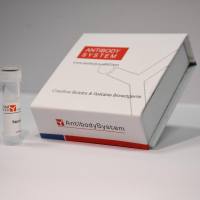Immunohistochemical Detection of Bromodeoxyuridine-Labeled Nuclei for In Vivo Cell Kinetic Studies
互联网
互联网
相关产品推荐

InVivoMAb 抗小鼠 CD274/PD-L1/B7-H1 Antibody (10F.9G2),InVivo体内功能抗体(In Vivo)
¥2700

Hemagglutinin/HA重组蛋白|Recombinant H1N1 (A/California/04/2009) HA-specific B cell probe (His Tag)
¥2570

Rbfox3/Rbfox3蛋白/Fox-1 homolog C (Hexaribonucleotide-binding protein 3) (Fox-3) (Neuronal nuclei antigen) (NeuN antigen) (D11Bwg0517e) (Hrnbp3)蛋白/Recombinant Mouse RNA binding protein fox-1 homolog 3 (Rbfox3)重组蛋白
¥69

γ-氨基丁酸试剂盒,用于样本中GABA含量检测,微量法,GABA Content Detection Kit
¥358

3,3′,5,5′-Tetramethylbenzidine Liquid Substrate, Slow Kinetic Form, for ELISA,peroxidase substrate,阿拉丁
¥815.90
相关问答

